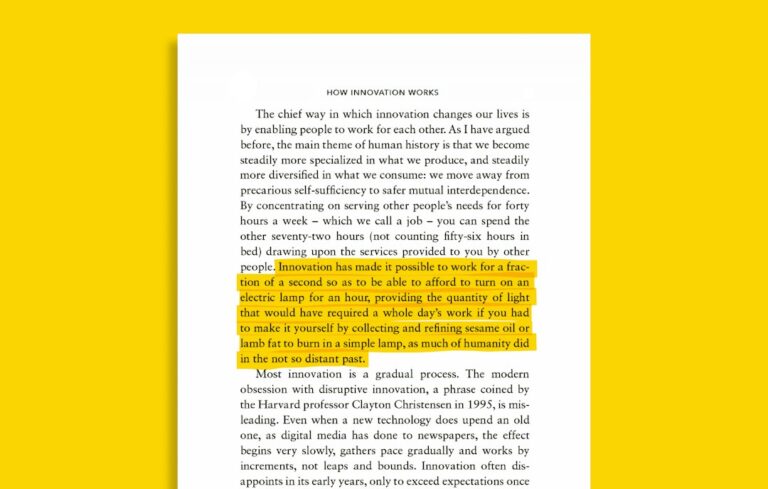Market rhythms play a crucial role in the success of a product. Understanding and leveraging these rhythms can greatly impact the effectiveness of product management strategies. In this article, we will explore the importance of market rhythms in product management and how they can be used to optimize various aspects of the product lifecycle, from planning to marketing. By incorporating market rhythms into product management practices, companies can increase their chances of success and stay ahead of the competition.
Key Takeaways
- Understanding market rhythms is crucial for successful product management
- Identifying market rhythms can help products succeed in the market
- Leveraging market rhythms can improve product planning
- Market rhythms play a key role in product development
- Market rhythms can aid in product positioning and pricing optimization
Understanding the Importance of Market Rhythms in Product Management
Market rhythms refer to the patterns and trends that exist within a specific market. These patterns can include seasonal fluctuations, consumer preferences, economic cycles, and technological advancements. By understanding these rhythms, product managers can make informed decisions about product development, positioning, pricing, and marketing.
Market rhythms have a significant impact on product management strategies. For example, seasonal fluctuations can influence the timing of product launches and marketing campaigns. Consumer preferences can determine the features and design elements that are most appealing to target customers. Economic cycles can affect pricing strategies and demand for certain products. Technological advancements can create new opportunities for innovation and disruption.
Recognizing and adapting to market rhythms is essential for product success. Ignoring or misunderstanding these rhythms can lead to missed opportunities, wasted resources, and ultimately, failure in the market. By understanding market rhythms, product managers can align their strategies with the needs and preferences of their target customers, increasing the chances of success.
Identifying Market Rhythms: A Key to Product Success
Identifying market rhythms is a crucial step in leveraging them for product success. There are several methods that product managers can use to identify these rhythms:
1. Market research: Conducting thorough market research is essential for understanding market rhythms. This includes analyzing consumer behavior, studying industry trends, and monitoring competitor activities. By gathering data and insights from various sources, product managers can identify patterns and trends that exist within the market.
2. Data analysis: Analyzing data from sales, customer feedback, and other sources can provide valuable insights into market rhythms. By examining historical data and identifying patterns, product managers can make informed decisions about product development, pricing, and marketing strategies.
3. Customer feedback: Listening to customer feedback is another effective way to identify market rhythms. By engaging with customers and understanding their needs and preferences, product managers can gain valuable insights into the market dynamics.
Identifying market rhythms is crucial for product success. By understanding the patterns and trends that exist within the market, product managers can tailor their strategies to meet the needs and preferences of their target customers. This can lead to better product positioning, improved pricing strategies, and more effective marketing campaigns.
There are numerous examples of successful products that leveraged market rhythms to their advantage. One such example is Apple’s iPhone. Apple identified the market rhythm of increasing consumer demand for smartphones with advanced features and capitalized on it by launching the iPhone. By understanding the market dynamics and consumer preferences, Apple was able to position the iPhone as a premium product and create a loyal customer base.
Leveraging Market Rhythms for Better Product Planning
| Market Rhythms | Product Planning |
|---|---|
| Seasonal trends | Product release timing |
| Consumer behavior patterns | Product features and design |
| Competitor analysis | Pricing strategy |
| Economic indicators | Product development budgeting |
Market rhythms can provide valuable insights for product planning. By understanding the patterns and trends within the market, product managers can make informed decisions about product features, design, and development timelines.
For example, seasonal fluctuations can influence the timing of product launches. Product managers can leverage these rhythms by planning their product releases during peak seasons when consumer demand is high. This can help maximize sales and create a sense of urgency among customers.
Market rhythms can also inform product planning in terms of features and design. By analyzing consumer preferences and industry trends, product managers can identify the features that are most appealing to their target customers. This can help prioritize development efforts and ensure that the final product meets customer expectations.
Incorporating market rhythms into product planning is essential for product success. By aligning product development with the needs and preferences of the market, companies can increase their chances of creating a product that resonates with customers and meets their expectations.
One example of a successful product that used market rhythms for planning is the Nintendo Switch. Nintendo identified the market rhythm of increasing demand for portable gaming devices and leveraged it by developing a hybrid console that can be used both as a handheld device and a traditional home console. By understanding the market dynamics and consumer preferences, Nintendo was able to create a unique product that appealed to a wide range of gamers.
The Role of Market Rhythms in Product Development
Market rhythms can also play a significant role in product development. By understanding the patterns and trends within the market, product managers can make informed decisions about product features, design, and functionality.
For example, technological advancements can create new opportunities for innovation and disruption. By staying up-to-date with the latest technologies and understanding how they can be applied to their products, companies can gain a competitive edge in the market.
Market rhythms can also inform product development in terms of design and user experience. By analyzing consumer preferences and industry trends, product managers can identify the design elements that are most appealing to their target customers. This can help create a product that is visually appealing, easy to use, and meets customer expectations.
Incorporating market rhythms into product development is crucial for product success. By aligning product features, design, and functionality with the needs and preferences of the market, companies can increase their chances of creating a product that resonates with customers and meets their expectations.
One example of a successful product that used market rhythms for development is Tesla’s electric vehicles. Tesla identified the market rhythm of increasing demand for sustainable transportation solutions and leveraged it by developing high-performance electric vehicles. By understanding the market dynamics and consumer preferences, Tesla was able to create a unique product that appealed to environmentally conscious consumers.
How Market Rhythms Can Help in Product Positioning

Market rhythms can provide valuable insights for product positioning. By understanding the patterns and trends within the market, product managers can position their products in a way that resonates with their target customers and differentiates them from the competition.
For example, consumer preferences can influence the positioning of a product. By analyzing consumer behavior and preferences, product managers can identify the unique selling points of their products and highlight them in their marketing messages. This can help create a strong brand identity and attract customers who are looking for specific features or benefits.
Market rhythms can also inform product positioning in terms of pricing. By understanding the price sensitivity of their target customers and analyzing market trends, product managers can determine the optimal price point for their products. This can help create perceived value and attract customers who are willing to pay a premium for certain features or benefits.
Incorporating market rhythms into product positioning is essential for product success. By aligning product positioning with the needs and preferences of the market, companies can increase their chances of creating a strong brand identity, attracting the right customers, and differentiating themselves from the competition.
One example of a successful product that used market rhythms for positioning is Airbnb. Airbnb identified the market rhythm of increasing demand for unique travel experiences and leveraged it by positioning itself as a platform that offers alternative accommodations and local experiences. By understanding the market dynamics and consumer preferences, Airbnb was able to create a unique value proposition that resonated with travelers looking for authentic and personalized experiences.
Using Market Rhythms to Optimize Product Pricing
Market rhythms can also play a significant role in product pricing. By understanding the patterns and trends within the market, product managers can determine the optimal price point for their products.
For example, economic cycles can influence pricing strategies. During periods of economic growth, consumers may be more willing to pay higher prices for certain products. On the other hand, during economic downturns, consumers may be more price-sensitive and look for more affordable options. By analyzing economic indicators and market trends, product managers can adjust their pricing strategies accordingly.
Market rhythms can also inform pricing in terms of competition. By analyzing competitor pricing and understanding the price sensitivity of their target customers, product managers can determine the optimal price point that maximizes profitability while remaining competitive in the market.
Incorporating market rhythms into product pricing is crucial for product success. By aligning pricing strategies with the needs and preferences of the market, companies can increase their chances of attracting customers, maximizing profitability, and staying ahead of the competition.
One example of a successful product that used market rhythms for pricing is Netflix. Netflix identified the market rhythm of increasing demand for streaming services and leveraged it by offering a subscription-based pricing model. By understanding the market dynamics and consumer preferences, Netflix was able to create a pricing strategy that appealed to customers looking for affordable and convenient access to a wide range of content.
The Impact of Market Rhythms on Product Launches
Market rhythms can have a significant impact on product launches. By understanding the patterns and trends within the market, product managers can plan their product launches in a way that maximizes visibility, generates buzz, and attracts customers.
For example, seasonal fluctuations can influence the timing of product launches. Product managers can leverage these rhythms by planning their launches during peak seasons when consumer demand is high. This can help generate excitement and create a sense of urgency among customers.
Market rhythms can also inform product launches in terms of marketing strategies. By analyzing consumer behavior and preferences, product managers can determine the most effective channels and messages to reach their target customers. This can help create a strong launch campaign that generates awareness and drives customer engagement.
Incorporating market rhythms into product launches is essential for product success. By aligning launch strategies with the needs and preferences of the market, companies can increase their chances of creating a successful launch that generates buzz, attracts customers, and sets the stage for long-term success.
One example of a successful product launch that used market rhythms is the iPhone. Apple identified the market rhythm of increasing consumer demand for smartphones with advanced features and leveraged it by launching the iPhone. By understanding the market dynamics and consumer preferences, Apple was able to create a highly anticipated launch that generated buzz and set new standards in the smartphone industry.
Maximizing Product Success with Market Rhythm-Based Marketing
Market rhythms can also inform marketing strategies. By understanding the patterns and trends within the market, product managers can create marketing campaigns that resonate with their target customers, generate awareness, and drive customer engagement.
For example, consumer preferences can influence marketing messages. By analyzing consumer behavior and preferences, product managers can determine the most effective messages to communicate the unique selling points of their products. This can help create a strong brand identity and attract customers who are looking for specific features or benefits.
Market rhythms can also inform marketing strategies in terms of timing. By analyzing seasonal fluctuations and industry trends, product managers can plan their marketing campaigns in a way that maximizes visibility and generates buzz. This can help create a sense of urgency among customers and drive customer engagement.
Incorporating market rhythms into marketing strategies is crucial for product success. By aligning marketing messages, timing, and channels with the needs and preferences of the market, companies can increase their chances of creating effective campaigns that generate awareness, attract customers, and drive sales.
One example of a successful product that used market rhythm-based marketing is Coca-Cola’s “Share a Coke” campaign. Coca-Cola identified the market rhythm of increasing demand for personalized experiences and leveraged it by creating personalized bottles with customer names on them. By understanding the market dynamics and consumer preferences, Coca-Cola was able to create a highly successful marketing campaign that generated buzz, increased brand engagement, and drove sales.
The Importance of Continuous Monitoring of Market Rhythms
Continuous monitoring of market rhythms is essential for product success. Market dynamics are constantly changing, and companies need to stay up-to-date with the latest trends and patterns to remain competitive.
There are several ways to monitor market rhythms:
1. Market research: Conducting regular market research is crucial for staying informed about market dynamics. This includes analyzing consumer behavior, studying industry trends, and monitoring competitor activities. By gathering data and insights from various sources, companies can identify new patterns and trends as they emerge.
2. Data analysis: Analyzing data from sales, customer feedback, and other sources can provide valuable insights into market rhythms. By examining historical data and identifying patterns, companies can make informed decisions about product development, pricing, and marketing strategies.
3. Customer feedback: Listening to customer feedback is another effective way to monitor market rhythms. By engaging with customers and understanding their needs and preferences, companies can gain valuable insights into the changing dynamics of the market.
Continuous monitoring of market rhythms is crucial for product success. By staying informed about the latest trends and patterns, companies can adapt their strategies to meet the evolving needs and preferences of their target customers.
There are numerous examples of products that failed due to a lack of monitoring market rhythms. One such example is Blockbuster. Blockbuster failed to adapt to the market rhythm of increasing demand for online streaming services and continued to focus on its brick-and-mortar rental stores. As a result, the company lost its competitive edge and eventually filed for bankruptcy.
Market Rhythm-Based Product Management: Best Practices and Case Studies
Incorporating market rhythms into product management requires a strategic approach and adherence to best practices. Here are some best practices for leveraging market rhythms for product success:
1. Conduct thorough market research: Regularly conduct market research to stay informed about the latest trends and patterns within the market. This includes analyzing consumer behavior, studying industry trends, and monitoring competitor activities.
2. Analyze data: Regularly analyze data from sales, customer feedback, and other sources to identify patterns and trends. This can provide valuable insights into market rhythms and help inform product management strategies.
3. Listen to customer feedback: Engage with customers and listen to their feedback to gain insights into their needs and preferences. This can help identify emerging market rhythms and inform product management decisions.
4. Stay up-to-date with industry trends: Continuously monitor industry trends and technological advancements to identify new opportunities for innovation and disruption. This can help stay ahead of the competition and create products that meet the evolving needs of the market.
5. Adapt strategies accordingly: Based on the insights gained from market research, data analysis, and customer feedback, adapt product management strategies to align with the needs and preferences of the market. This includes product planning, development, positioning, pricing, marketing, and launch strategies.
Case studies of successful products that used market rhythms:
1. Apple’s iPhone: Apple identified the market rhythm of increasing consumer demand for smartphones with advanced features and capitalized on it by launching the iPhone. By understanding the market dynamics and consumer preferences, Apple was able to position the iPhone as a premium product and create a loyal customer base.
2. Tesla’s electric vehicles: Tesla identified the market rhythm of increasing demand for sustainable transportation solutions and leveraged it by developing high-performance electric vehicles. By understanding the market dynamics and consumer preferences, Tesla was able to create a strong brand image and establish itself as a leader in the electric vehicle industry. The company’s vehicles are known for their cutting-edge technology, sleek design, and impressive range. Tesla’s commitment to sustainability and innovation has resonated with environmentally conscious consumers, who are willing to pay a premium for their products. Additionally, Tesla’s extensive network of Supercharger stations has addressed one of the major concerns of electric vehicle owners – the availability of charging infrastructure. This has further boosted the appeal of Tesla’s vehicles and contributed to their growing popularity. Overall, Tesla’s electric vehicles have revolutionized the automotive industry and set a new standard for sustainable transportation.
If you’re interested in exploring how product management can leverage market rhythms, you might find this article on “Mastering Your Creative Agency’s Niche: Strategies for Growth and Focus” insightful. It delves into the importance of finding your agency’s niche and developing strategies to thrive in a competitive market. Additionally, if you’re looking for inspiration on finding purpose and aligning it with your work, this article on “Find Your Reason for Living: Ikigai Breakdown” offers a breakdown of the Japanese concept of ikigai and how it can help you find fulfillment in your career.
FAQs
What is product management?
Product management is the process of overseeing all aspects of a product, from its conception to its launch and beyond. It involves working with cross-functional teams to ensure that the product meets the needs of the market and the company’s goals.
What are market rhythms?
Market rhythms refer to the patterns and trends that exist in the market, such as seasonal fluctuations, changes in consumer behavior, and shifts in industry trends. These rhythms can have a significant impact on a product’s success or failure.
How can product management leverage market rhythms?
Product management can leverage market rhythms by understanding and anticipating them. By analyzing market data and trends, product managers can make informed decisions about when to launch a product, how to price it, and how to market it. They can also use market rhythms to identify opportunities for new products or features that align with changing consumer needs.
What are some examples of market rhythms?
Examples of market rhythms include seasonal fluctuations in demand for certain products, such as holiday shopping for toys and electronics, or increased demand for outdoor gear in the summer. Changes in consumer behavior, such as a shift towards more sustainable products or a preference for online shopping, can also be considered market rhythms.
Why is it important for product management to leverage market rhythms?
Leveraging market rhythms can help product management stay ahead of the competition and meet the changing needs of consumers. By understanding and anticipating market trends, product managers can make informed decisions about product development, pricing, and marketing, which can ultimately lead to greater success in the marketplace.







